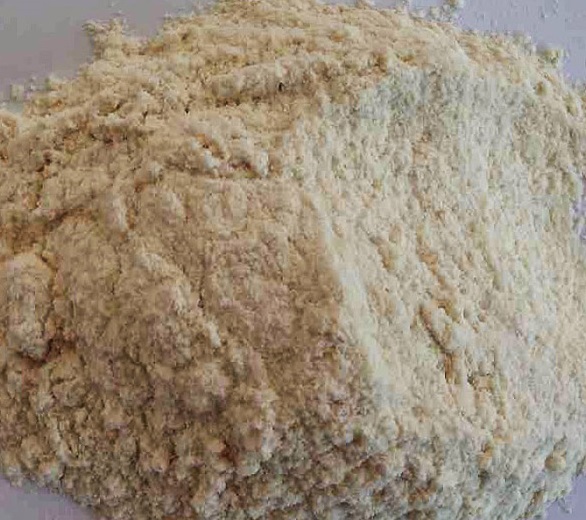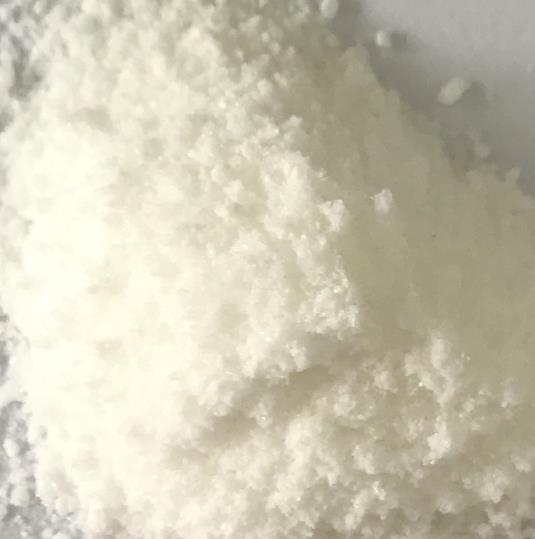Preparation and Applications of Calcium Alginate
Apr 9,2024
Introduction
Calcium Alginate, a versatile natural polymer, is widely recognized for its unique chemical properties and extensive applications. Predominantly derived from seaweeds, particularly brown algae, it finds substantial utilization in industries such as food, medicine, and agriculture[1].

Fig 1 Calcium Alginate
Chemical Properties of Calcium Alginate
Calcium Alginate is a salt of alginic acid, characterized by its unique gel-forming capabilities when exposed to aqueous solutions. Its molecular structure consists of blocks of (1-4)-linked β-D-mannuronate (M) and α-L-guluronate (G) residues, which are responsible for its ability to form gel in the presence of calcium ions. This property is central to its functionality, as the divalent calcium ions create junction zones between the G-blocks, leading to the formation of a three-dimensional network. Additionally, Calcium Alginate's solubility in water and its ion-exchange properties make it an invaluable material in various applications, particularly in biotechnology and medicine.
Preparation of Calcium Alginate
The preparation of Calcium Alginate typically involves the extraction of alginic acid from brown seaweed. The process begins with the treatment of the seaweed with an alkaline solution to convert the insoluble alginic acid into soluble sodium alginate. Following this, the sodium alginate solution is treated with a calcium salt, which leads to the precipitation of Calcium Alginate. This precipitate is then collected and dried to obtain the final product. Industrial production methods often involve variations of this process, tailored to optimize yield and purity based on the intended application of the Calcium Alginate.
Applications
Medical Field
In the medical sector, Calcium Alginate is prominently used as a wound dressing material. Its ability to absorb exudate while maintaining a moist environment promotes faster healing and minimizes scarring. Moreover, its biocompatibility and ease of removal from the wound site without causing additional trauma make it an ideal choice for medical professionals[2].
Food Industry
Within the food industry, Calcium Alginate serves as a stabilizer and thickener. It is particularly valued for its ability to enhance the texture and consistency of products like ice cream and yogurt. Furthermore, its use in encapsulating flavors and aromas extends the shelf life and maintains the quality of various food items.
Agriculture
In agriculture, Calcium Alginate is used to improve soil structure and as a carrier for the slow release of fertilizers, enhancing plant growth and yield. Its hydrogel form can absorb and retain large amounts of water, which is particularly beneficial for seed germination and young plant development in arid regions.
Beyond these areas, Calcium Alginate finds applications in water treatment, where it assists in the removal of heavy metals and other contaminants. Its role in biotechnology is also noteworthy, especially in the encapsulation of cells and enzymes, facilitating controlled release and protection of the encapsulated materials.
Water Purification
One of the critical environmental uses of Calcium Alginate is in water purification. Its effectiveness in absorbing and removing heavy metals and other pollutants from water sources is vital for maintaining water quality and ecosystem health. The material's capacity to form hydrogels is particularly beneficial in capturing and immobilizing contaminants, facilitating their removal from water bodies.
Soil Remediation
Calcium Alginate also plays a crucial role in soil remediation. Its ability to enhance soil structure, promote water retention, and facilitate the slow release of nutrients makes it an invaluable tool in restoring degraded soils. In areas affected by industrial pollution or excessive use of chemical fertilizers, Calcium Alginate can help to bind contaminants, reducing their bioavailability and mitigating environmental risks.
Research and Development
Recent research on Calcium Alginate focuses on expanding its application scope. Innovations include its use in biomedical engineering, such as in drug delivery systems where its biocompatibility and gel-forming properties enable targeted and controlled release of therapeutics. Environmental science also benefits from Calcium Alginate, particularly in the development of more efficient and eco-friendly water purification techniques.
![]() References
References
[1]Hecht H, Srebnik S. Structural characterization of sodium alginate and calcium alginate[J]. Biomacromolecules, 2016, 17(6): 2160-2167.
[2]Zhang X, Wang X, Fan W, et al. Fabrication, property, and application of calcium alginate fiber: a review[J]. Polymers, 2022, 14(15): 3227.
- Related articles
- Related Qustion
- The uses of Calcium Alginate Oct 12, 2023
Calcium alginate is a water-insoluble, gelatinous, cream-coloured substance and widely used in the food, medical, pharmaceutical, and textile industries.
Voglibose is a potent α-glucosidase inhibitor effective against hyperglycemia, obesity, and diabetes, with fewer side effects than acarbose. Its synthesis is complex and precise.....
Nov 13,2024APIDrostanolone Enanthate,is a synthetic anabolic-androgenic steroid with a notable presence in the pharmaceutical and sports industries.....
Apr 9,2024APICalcium Alginate
9005-35-0You may like
Calcium Alginate manufacturers
- Calcium Alginate
-

- $0.00 / 25Kg/Drum
- 2024-11-14
- CAS:9005-35-0
- Min. Order: 25KG
- Purity: 89.6%-104.5%
- Supply Ability: 10000kgs
- Calcium Alginate
-

- $0.00 / 1KG
- 2024-10-28
- CAS:9005-35-0
- Min. Order: 1KG
- Purity: 99%
- Supply Ability: 500000kg
- Calcium Alginate
-

- $75.00 / 1kg
- 2024-10-25
- CAS:9005-35-0
- Min. Order: 1kg
- Purity: 0.99
- Supply Ability: 20 tons






